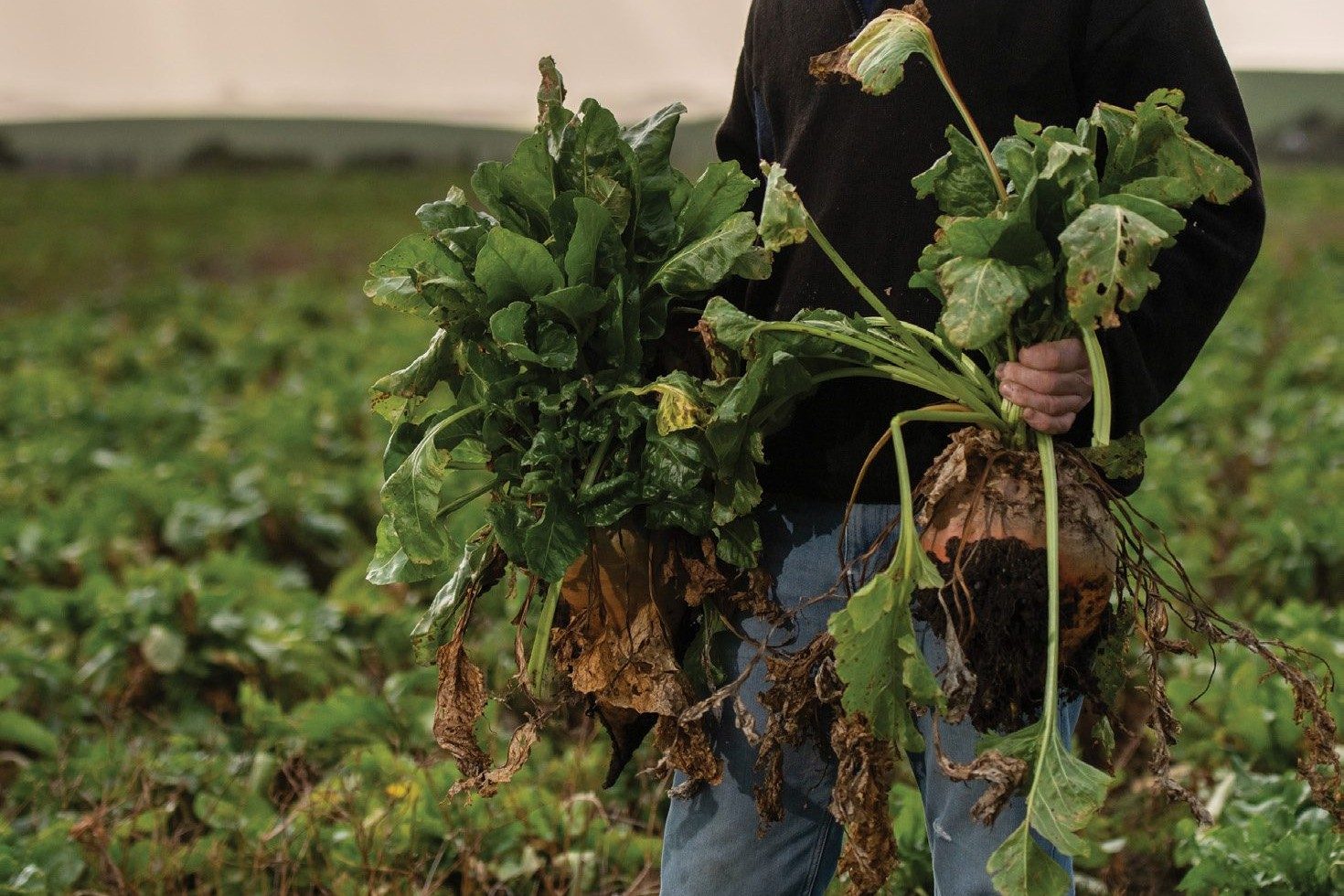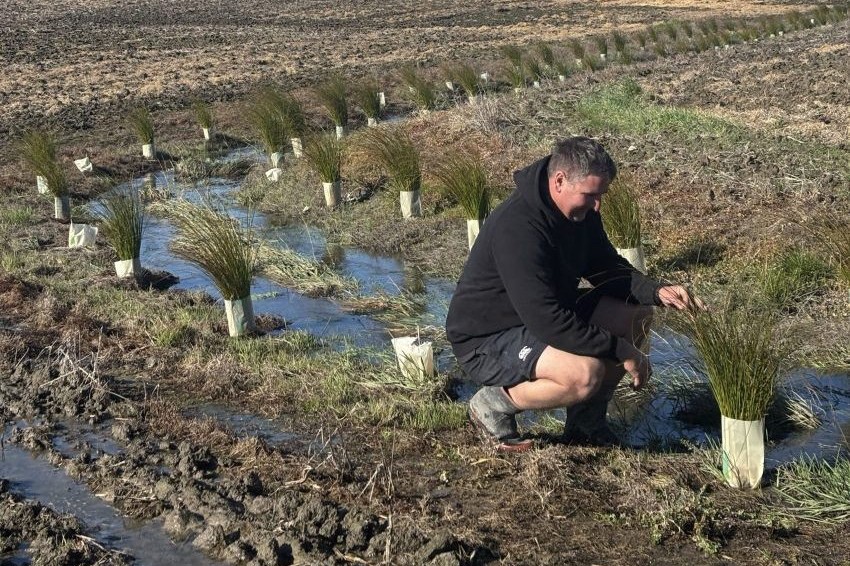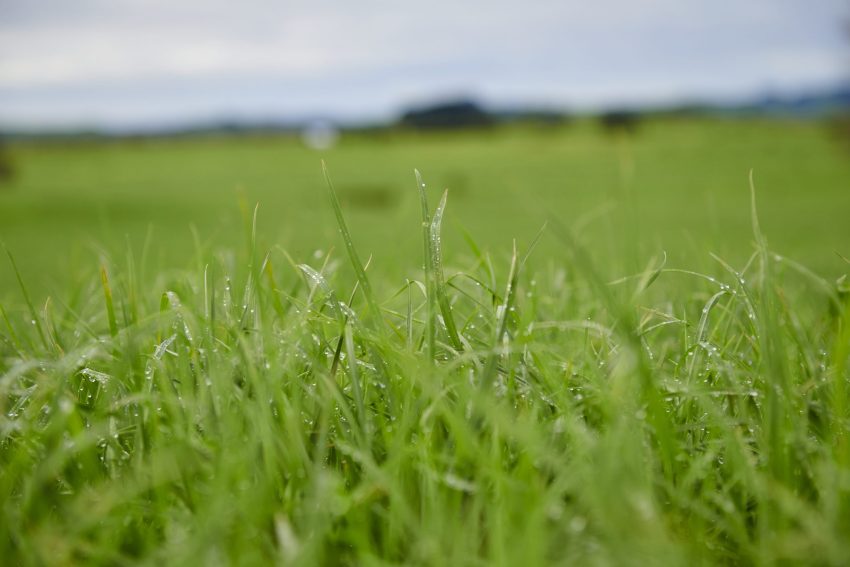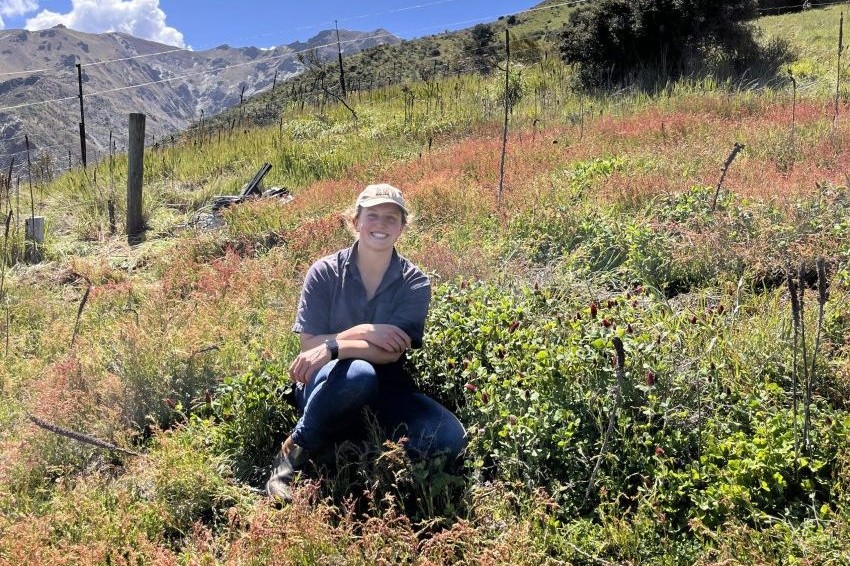Is fodder beet’s light fading?
Failure to understand the importance of supplements and trace elements to fully feed livestock may be turning farmers off growing fodder beet. By Lynda Gray.

Failure to understand the importance of supplements and trace elements to fully feed livestock may be turning farmers off growing fodder beet. By Lynda Gray.
A re sheep and beef farmers, and dairy grazers turning away from fodder beet’s big, sweet bulb to kale or swedes? And if this is the case, why?
The only sure way to substantiate a move away from beet is the change in the area grown. But that’s difficult because there is no updated figure from the estimated 69,000 hectares grown in 2019.
But anecdotal feedback from ag professionals and consultants is that the area grown has pegged back. Ashburton farm consultant Tom Ward says some farmers, especially on Canterbury dryland farms, are ditching fodder beet in favour of kale for animal performance and animal health reasons.
“A lot who have grown it still don’t understand it, so they’ve achieved average results at a great expense.”
Numerous Beef + Lamb New Zealand online resources, forums, seminars and field days over the last decade have explained the growing and management of the crop. But for whatever reason the messages don’t seem to have stuck, particularly around the transitioning and feeding of the crop for liveweight gain.
Central Otago farm consultant Pete Young says the average performance is indicative of farmers not feeding beet in a nutritionally balanced winter diet. North American and European farmers who winter livestock indoors understand the importance of supplements and trace elements to fully feed livestock but it’s an area many NZ farmers struggle with, he says.
The protein shortfall of the fodder beet bulb is typically counterbalanced with silage or balage. But are there other supplements or protein feeding options that should be considered for optimal liveweight gain?
The balanced feeding and diet aspect is mentioned in an AgResearch project ‘Feeding fodder beet to pregnant ewes: what you need to know’. The research recommends that more investigation is needed to identify and address any identified nutritional shortcomings, and the development of feeding recommendations for sheep and other classes of livestock.
The proposed dairy cattle welfare code recommends beet comprise no more than 60% of a dry dairy cow’s diet. PGG Wrightson Seeds veterinary nutritionist Charlotte Westwood says the respective codes for sheep, beef and deer include no recommended allowance. However, she notes that there are risks if feeding is poorly managed which was recently highlighted in another AgResearch project looking at the effects of feeding of fodder beet to twin bearing ewes.
The research concluded that ewes fed beet from mid-pregnancy until lambing had a negative effect on lamb survival and pre-weaning growth rates.
Southland farm consultant Deane Carson says that research makes it difficult to justify feeding it to pregnant ewes. Beet is not widely fed to sheep and its real benefit has been in beef and dairy beef cattle grazing situations, which is still the case, he says.
“Beef finishing farmers appreciate the quality retention it has into the months of September and October.”
Beef processors speak positively about the ability of beet to add liveweight and produce quality meat that can attract premium payments.
Seed Force extension manager James White says NZ pioneered early beef finishing on the back of fodder beet.
“Many farmers are finishing R2 steers off the crop, which up until the introduction of beet was unheard of from a largely winter (brassica) crop-based diet.”
R1 systems are slightly more complex due to the high protein requirements, but beet is being fed to develop these young animals over winter and enable them to better utilise the spring protein flush, he says.
The beet for young beef system is a cost and production-efficient system because it means farmers don’t have to winter and feed cattle over two winters.
White acknowledges some beef producers struggle to achieve the live weight gains and says that could be due to a number of factors.
“That includes growing the correct beet type for the respective animal class, such as low drymatter beet for yearling cattle, through to the correct supplement type and feeding rates which are all crucial for good results.”
He says the information is available and many use it to great effect.
“Getting the results comes down to thorough research and planning, combined with good management for the respective system, as is the case for any crop. “Any issues should be avoidable with sound advice and management.”
Abacus Bio consultant Simon Glennie says that some sheep and beef farmers are questioning whether to continue with fodder beet.
“…a big factor is the high cost of growing beet and the challenge of getting consistent yields over 20t on many farms.”
Also, the transition phase is problematic for some.
“It requires a lot of expensive balage as well as good staff and with the shortage of labour in general, getting the right people is becoming a real problem.”
Environmental benefits
Environmentally speaking fodder beet stacks up better than kale. In broad terms, under the same conditions, it produces twice the yield in half the area and produces about half the run-off. This was substantiated in recent research by AgResearch scientists who looked at dairy cow grazing in Southland on two trial areas of beet and kale.
The winter-grazed beet leached 40-50% less nitrogen than the comparable kale crop. White says that’s a big plus for beet, given the impending intensive winter grazing rules which will restrict the area of feed grown and require the monitoring of run-off.
Another environmental tick in favour of beet is ground conditions post-grazing.
Observations at a Southern Dairy Hub site were that mud and compaction on respective kale and beet crops were the same, despite the beet having had a much higher stocking rate.
White says the lifting and feeding of beet would be a way of by-passing IWG regulations.
“(Harvesting beet) is considered an arable activity under the Resource Management Act and therefore excluded from winter grazing regulations.”
There are also pest and disease considerations.
“Beet as an alternate species to brassicas provides the opportunity to break disease cycles such as dry rot and club root, that have plagued brassicas for years.”
Spin-offs from beet
The pioneering of winter kale systems for beef cattle and dairy cattle has brought with it new management, some of which has been successfully applied to brassicas.
Glennie says it’s probable that the attention to detail required for the growing of beet has led to better management of kale and swede crops.
With the uptake of beet came precision planters which contractors are now adept and experienced at using. That’s led to some farmers adopting the precision planting technology for swedes, another bulb crop.
Barenbrug marketing manager Graham Kerr says there’s been a slow but growing interest in precision planted swedes over the last five years.
“That’s come about because farmers have seen what’s possible with the precision planting of beet.”
He says a precision sown swede crop can conservatively yield an extra 10 to 15%, and in some exceptional situations 20 to 30%. The costs of seed and establishment are higher but offset by the increased yield.
Pete Young has also noticed more paddocks of precision-planted swedes with some yielding 22-23-tonne crops at a cost of about 6 to 7c/kg/DM.
But Kerr says it’s not only the increased yield that counts, it’s the ease of management compared to a traditionally ridged crop.
“It’s easier to spray and break feed an evenly spaced crop.”
The only foreseeable drawback is the precision planting requires cultivation, a practice that might be restricted under future environmental regulation.
Costs and margins
A sensitivity analyses by Tom Ward (Table 1 and Table 2) compares the costs and margins of growing fodder beet and kale for a weaner steer finishing system.
The number of steers traded and overall performance in a fodder beet versus kale system is compared in the Farmax South Canterbury non-irrigated scenario. Both the beet and kale crops are ‘average’ yield crops grown on 15ha. The scenario assumes the finishing of 230 steer calves on kale, and 300 steer calves on beet.
The beet is an 18-tonne crop which cost $2500/ha to grow and has a gross margin of $2404/ha. The kale is a 9t crop which cost $1500/ha to grow and has a gross margin of $1395/ha. The gross margins include across-farm revenue and expenses.
The scenario shows that the fodder beet grazed steers produce more meat per kilogram of drymatter and a higher gross margin.
Ward says the fodder beet option appears much more profitable, but the result is very sensitive to reduced yields.
“Some non-irrigated farmers particularly on smaller farms who have experienced two droughty autumns are struggling to justify beet.”




